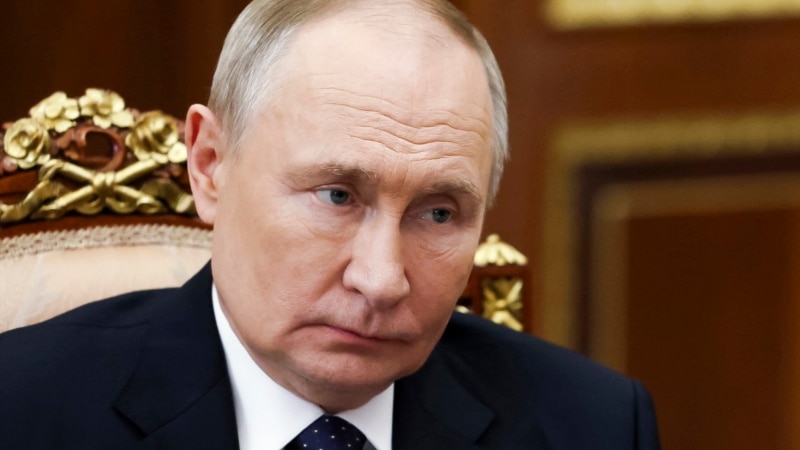““The rhetoric of the Kremlin’s “red lines” is extremely inconsistent,” say analysts”, — write: www.radiosvoboda.org
“Putin directly threatened that Russia could attack Western countries that support Ukrainian strikes deep into Russia, and rhetorically linked the November 21 ballistic missile strike with Russia’s nuclear potential – a noticeable strengthening of Russia’s information operation aimed at using clear threats and brandishing nuclear weapons, in order to prevent further military support from the West of Ukraine,” the message reads.
Analysts note that Putin’s statements on November 21 demonstrate that the constant rattling of arms by Moscow “remains largely rhetorical.”
“Putin’s recent threats against the West have focused on Western powers allowing Ukraine to launch long-range strikes on ‘Russian territory,’ but Ukrainian forces have long been striking what the Kremlin illegally defines as ‘Russian territory.’ The Kremlin illegally designated occupied Crimea as part of Russia after Russia’s illegal annexation of Crimea in 2014, and Ukrainian forces have regularly struck Crimea with US-provided ATACMS and UK-provided Storm Shadow since April 2023,” analysts say.
She noted that the Kremlin’s use of its “red lines” rhetoric is “extremely inconsistent.”
“Putin constantly escalates the war on his own, despite the decisions of the West, and constantly refuses to retaliate every time the Western powers increase their support for Ukraine. Earlier, Putin threatened revenge if the Western powers provide Ukraine with rocket artillery, tanks, military aircraft and the ability to strike Russia,” ISW added.
Analysts emphasized that neither the Oreshnik ballistic missile strike nor Putin’s statements on November 21 represent a significant break in Russia’s strike capabilities or the likelihood of using nuclear weapons.
“Russian forces regularly bombard Ukraine with Iskander ballistic missiles, Kinzhal hypersonic ballistic missiles and Kh-101 cruise missiles, which can carry nuclear weapons. Previous Russian missile strikes have targeted industrial and critical infrastructure, including the city of Dnipro, causing more damage,” the report said.
The only fundamentally new feature of the Russian strikes on the Dnipro on November 21, according to analysts, was the Oreshnik missile itself, used to “enhance the spectacle of the strike and further hint at a nuclear threat.”
“The West has credible deterrence options, and Putin’s brandishing of nuclear weapons should not deter Western officials from further aid to Ukraine,” ISW said, citing a September statement by CIA Director William Burns. He urged Western politicians not to be afraid of Putin’s nuclear rhetoric, describing him as a “bully” who “will continue to rattle his guns from time to time.”
On the evening of November 21, Russian President Vladimir Putin announced the “successful test in combat conditions” of the latest Oreshnik medium-range missile. According to him, the forces of the Russian Federation struck the Dnieper with this ballistic missile with non-nuclear hypersonic equipment.
Putin said that this was “a response to the aggressive actions of NATO countries towards Russia” – the permission of Ukraine to strike with Western missiles on the territory of the Russian Federation and such strikes in the Bryansk and Kursk regions.
“The question of the further deployment of medium- and shorter-range missiles will be decided by us depending on the actions of the United States and its satellites. Objects to be affected will be determined taking into account the threats to the Russian Federation. We believe that we have the right to use our weapons against the military facilities of those countries that allow their weapons to be used against our facilities,” he said.
The Russian leader also said that in the future, civilians will be informed about plans to use Oreshnik.
On the morning of November 21, the Air Force of the Ukrainian Armed Forces reported that Russian troops attacked the Dnipro with various types of missiles, including launching an intercontinental ballistic missile.
According to the local authorities, an industrial enterprise was damaged in Dnipro as a result of the strike, two fires also broke out in the city, and three people were injured.
On November 20, the US Embassy in Ukraine announced that it had received “specific information” about a possible significant Russian air attack on November 20. As a precaution, the embassy was closed. Subsequently, the diplomatic missions of Spain, Italy and Greece also announced the closure for visitors on November 20.
Against this background, social networks spread information about the possibility of launching an attack on Ukraine with the RS-26 “Rubezh” ballistic missile. The launches were supposed to be from a training ground in the Astrakhan region. On November 20, no such launches were reported.
